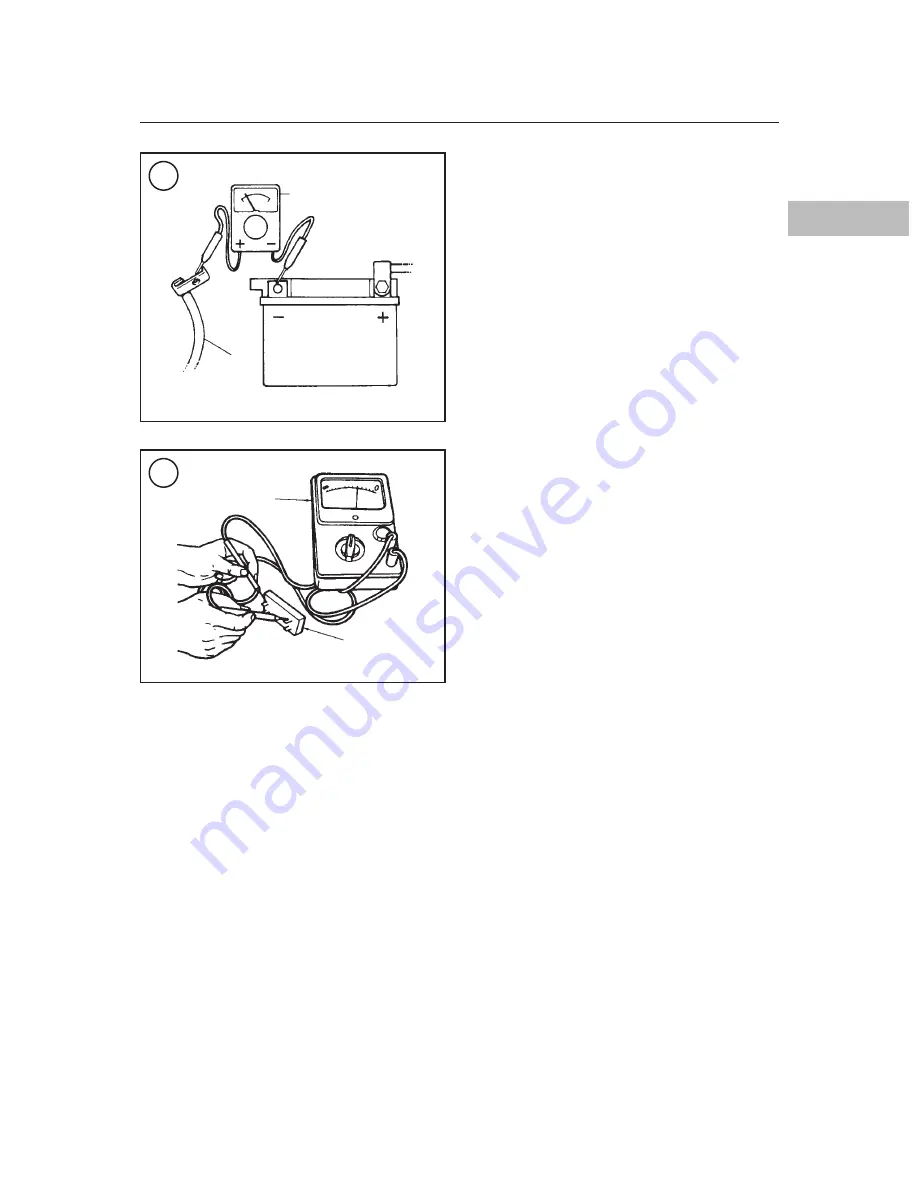
3. Select two points within the circuit where there
should be continuity.
4. Attach one lead of the self-powered test light to
each point.
5. If there is continuity, the self-powered test light
bulb will turn on.
6. If there is no continuity, the self-powered test
light bulb will not come on indicating an open cir-
cuit.
7. Never use a self-powered test light on circuits
that contain solid-state devices. The solid-state de-
vice may be damaged.
Ohmmeter
An ohmmeter measures the resistance in ohms to
current flow in a circuit or component. Like the
self-powered test light, an ohmmeter contains its
own power source and should not be connected to a
live circuit.
Ohmmeters may be analog (needle scale) or
digital (LCD or LED readout). Both types of
ohmmeters have different ranges of resistance for
accurate readings. The analog ohmmeter also has
a set-adjust control which is used to zero or cali-
brate the meter; digital ohmmeters do not require
calibration.
Connect an ohmmeter test leads to the terminals
or leads of the circuit or component to be tested
(
Figure 12
). When using an analog meter, calibrate
it by touching the test leads together and turning the
set-adjust knob until the meter needle reads zero.
When the leads are uncrossed, the needle should
move to the other end of the scale indicating infinite
resistance.
During a continuity test, a reading of infinity in-
dicates that there is an open in the circuit or compo-
nent. A reading of zero indicates continuity, which
means there is no measurable resistance in the cir-
cuit or component being tested. If the meter needle
falls between the two ends of the scale, this indi-
cates the actual resistance to current flow that is
present. To determine the resistance, multiply the
meter reading by the ohmmeter scale. For example,
a meter reading of 5 multiplied by the R × 1000
scale is 5000 ohms of resistance.
CAUTION
Never connect an ohmmeter to a cir
cuit which has power applied to it. Al
ways disconnect the battery negative
lead before using an ohmmeter.
Jumper Wire
A jumper wire is a simple way to bypass a poten-
tial problem and isolate it to a particular point in a
circuit. If a faulty circuit works properly with a
jumper wire installed, an open exists between the
two jumper points in the circuit.
To troubleshoot with a jumper wire, first use the
wire to determine if the problem is on the ground
side or the load side of a device. In the example
shown in
Figure 13
, test the ground (A) by connect-
ing a jumper between the lamp and a good ground.
If the lamp comes on, the problem is the connection
between the lamp and ground. If the lamp does not
come on with the jumper installed, the lamp’s con-
TROUBLESHOOTING
49
2
12
Ohmmeter
Component
11
Ammeter
Battery
ground
cable
















































